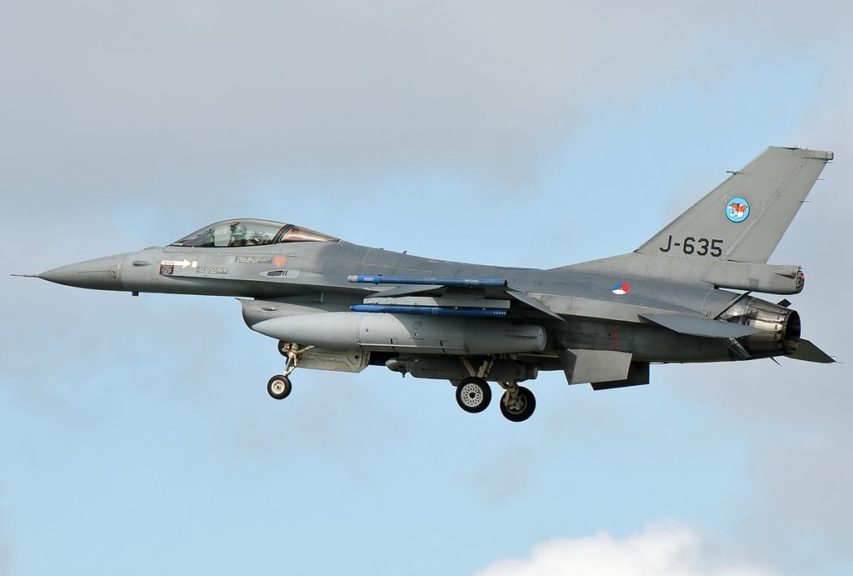I didn’t think this was even remotely a possibility:

General Dynamics F-16AM Fighting Falcon
of the Netherlands Royal Air Force
Photo by Aldo Bidini via Wikimedia Commons.
The Netherlands’ Defense Safety Inspection Agency (Inspectie Veiligheid Defensie) is investigating an incident during a January military exercise in which a Dutch Air Force F-16 was damaged by live fire from a 20-millimeter cannon — its own 20-millimeter cannon. At least one round fired from the aircraft’s M61A1 Vulcan Gatling gun struck the aircraft as it fired at targets on the Dutch military’s Vliehors range on the island of Vlieland, according to a report from the Netherlands’ NOS news service.
Two F-16s were conducting firing exercises on January 21. It appears that the damaged aircraft actually caught up with the 20mm rounds it fired as it pulled out of its firing run. At least one of them struck the side of the F-16’s fuselage, and parts of a round were ingested by the aircraft’s engine. The F-16’s pilot managed to land the aircraft safely at Leeuwarden Air Base.
The incident reflects why guns on a high-performance jet are perhaps a less than ideal weapon. The Vulcan is capable of firing over 6,000 shots per minute, but its magazine carries only 511 rounds — just enough for five seconds of fury. The rounds have a muzzle velocity of 3,450 feet per second (1050 meters per second). That is speed boosted initially by the aircraft itself, but atmospheric drag slows the shells down eventually. And if a pilot accelerates and maneuvers in the wrong way after firing the cannon, the aircraft could be unexpectedly reunited with its recently departed rounds.



